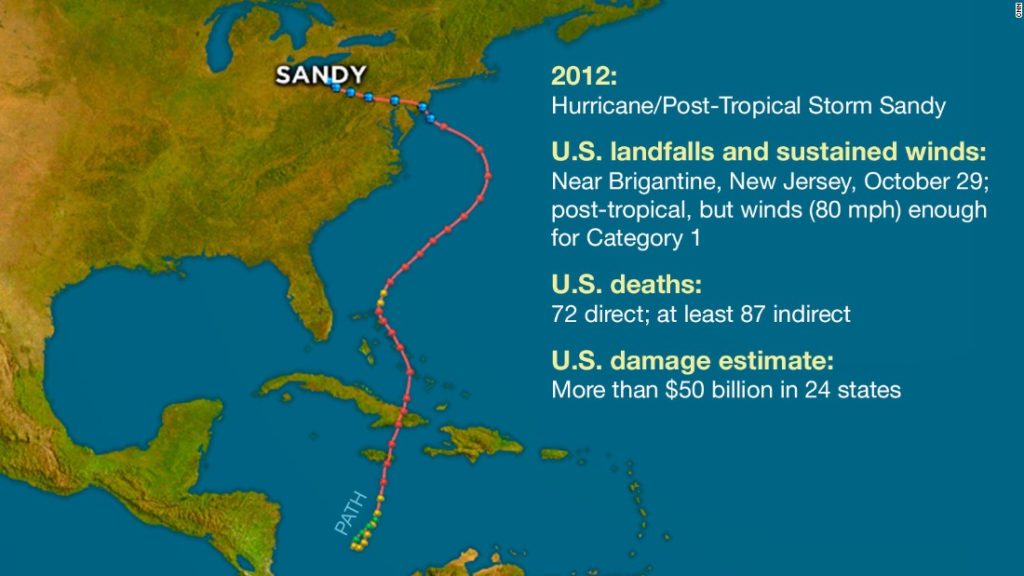Measuring Climate Change’s Storm Enhancement

We’ve moved beyond the talk of 10 years ago when any discussion of climate change-induced storms would lead to howls of “We can’t say any individual storm is related to climate change” that you’d get even from the left-of-center world to increasingly being able to measure just how much climate change has made individual storms worse. For instance, a recent study suggests that climate change contributed $8 billion to Hurricane Sandy’s damages.
There is a universe in which Hurricane Sandy didn’t create quite so much devastation back in 2012; where the waters, which surged deep into subway tunnels and left parts of New York City in the dark for days, left some parts of the tri-state area unscathed.
And that universe, according to scientists, is one without climate change.
Superstorm Sandy destroyed half a million homes, killed 159 people, and caused $62.5 billion in damages. And, according to a new study out Tuesday in Nature Communications, 13 percent of its costs can be attributed to human-caused sea-level rise. In other words, without warming temperatures and rising seas, tens of thousands of homes would have gone untouched, and $8.1 billion of damages would not have occurred.
“Climate change is already hurting us much more than we realize,” said Benjamin Strauss, chief scientist at the research and communications nonprofit Climate Central and one of the study’s authors. (Strauss was also once a member of Grist’s board of directors.)
Linking climate change to disastrous weather events like droughts, hurricanes, or floods is always tricky: Terrible storms happened before people started mucking with the global thermostat, and they’ll continue even if countries start to get their emissions under control. But scientists have long said that warming temperatures can make certain types of weather — heat waves, severe droughts, and floods — more likely or more severe.
Nine years after Sandy made landfall, though, scientists still aren’t positive if the fourth-costliest hurricane in U.S. history was made more likely by warming temperatures. So Strauss and his co-authors took a different tack. Instead of investigating whether warmer temperatures affected the likelihood of the hurricane itself, they focused on whether the damage done by Sandy — the homes flooded in New York City or the piers destroyed in New Jersey — had been made worse by human-caused sea-level rise.


